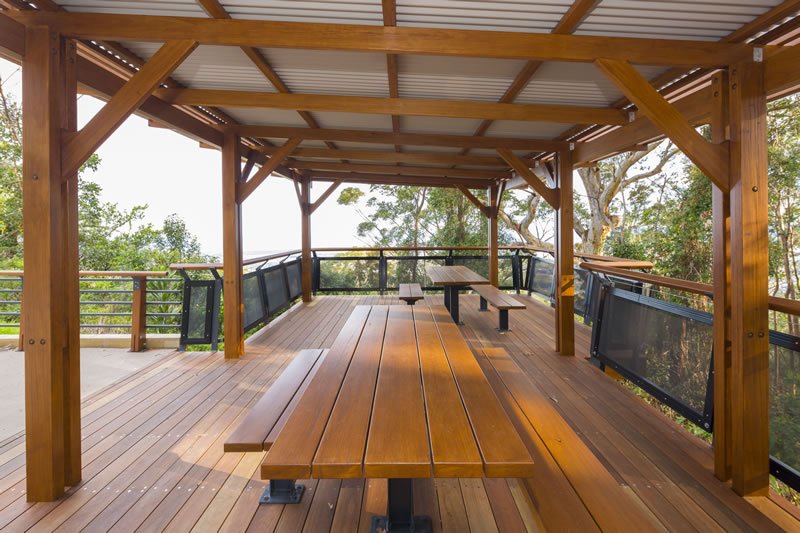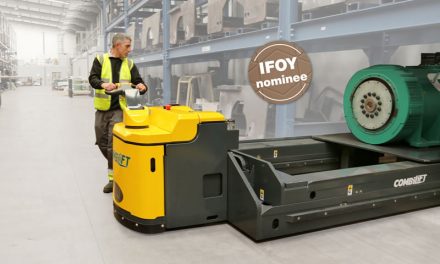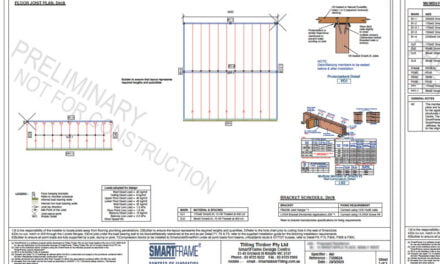Decking products have multiple demands on them from commercial and domestic clients, but the beauty of timber and timber-like product is a uniting factor.
Domestic and commercial building trends are only occasionally in lockstep, but the move to the ‘outdoor room’ in recent years has been widespread, with decking an essential component. Whether it’s a case of extending a venue into the open air, adding entertaining space to the home, providing protection from nature or simply creating a safe surround for a pool, it’s a place where investment in product knowledge can go a long way for both suppliers and builders.
Which isn’t to say that domestic and commercial clients will have the same needs. Indeed, they’re often competing. Commercial clients looking to install a large area of decking are very likely to consider the cost of ongoing maintenance as a key part of their decision making and so may tend towards prestige products that can stand up to hard wear with low or no re-coating needs. Domestic clients will never have the same level of traffic through their homes as through a school or hotel and may be more concerned about initial cost or the difficulty of laying the deck effectively.
Other concerns range from the poetic –choosing recycled or natural timbers that tell a story of place as well as look great – to the prosaic – how hard is it to remove grease stains or replace a damaged section? Increasingly, concerns revolve around the whole-of-life cycle of the product, including the origin of the timber, frequency of re-coating requirements and durability, with decades, not years, a standard expectation.
Whoever your client is, being armed with a comprehensive understanding of more than one of the leading decking options will both help you to make the sale and establish you as a product expert, which makes all the difference when it comes to word-of-mouth referrals for the next client.
Here we look at several key decking types from leading brands and how they’ve been used in applications big and small.
Stable and durable
Thermally modified timbers have a strong reputation for durability. Processes such as the one used by Estonian-based Thermory slowly heat timbers to change their chemical composition, rendering them resistant to insects and rot, with enhanced dimensional stability and lifespan, and a richer, natural colour that permeates through the entire thickness of the board.
The resulting product is particularly well-suited to decking and is increasingly popular with commercial clients. Among Thermory’s larger decking projects have been remote luxury reserve lodges in South Africa and Botswana, where temperatures regularly hover around 40°C. Thermo-Ash and Thermo-Pine decking products were used on these projects for their durability and thermal stability in tough conditions, and the company’s clip-in systems made installation faster and easier for the labour team, some of whom spent the build living in tents!
At the Ezeretz spa hotel in southwest Bulgaria’s Blagoevgrad, Thermo-Ash is used for decking around the pool and jacuzzi and Thermo-Aspen medium in the dry sauna. Thermal treatment means the decking can withstand the high humidity as effectively as the dry conditions of Southern Africa, without shifting.
“Another major project that we worked on was a school project in Copenhagen,” says Maria Pirogova, Thermory area sales manager,exteriors. “It uses Thermo-Ash and the design takes advantage of the fact that Thermory timbers will silver naturally if they’re installed without coating.”
More than 2000m2 of decking was installed as part of the project, with the architects using the decks and stairs to create a connection between the school buildings and the nearby waterfront that would encourage outdoor activities among the children and function as an extra classroom in good weather.
“We actually supplied the timber twice,” says Thomas Lindner Nielsen, product chief and project chief at Moelven, a leading Danish building supplier. “Sadly, the school burned down just before opening.
“But the city rebuilt, holding true to the design by JJW Architects. They chose Thermo-Ash for its ‘Green’ image, as part of a set of environmentally responsible products and design elements for the school’s construction. The project won the WAN Education Award in 2016.”
The product’s ability to keep its good looks despite hard wear and harsh conditions means it’s equally at home in luxury builds and in those that need to stand up to more robust use, such as schools and boardwalks. “While Thermory hasn’t been in Australia for long, we can show that the product performs admirably in the huge variety of climate requirements of this big country, thanks to our broad international experience,” says Pirogova.
“The boards’ low thermal conductivity is also very attractive for hot summers, and the chemical-free treatment means that it’s suitable for applications including those with restrictions on some treatments: residential, educational and child care.”
Natural and strong
Traditional Australian hardwoods remain a consistently popular choice with architects and designers, and for good reason. They’re naturally durable, come in a range of colours and grains that add great visual and tactile interest, and have an appealing whole-of-life story, whether they’re sustainably harvested or recycled from old structures.
Ryan McCarthy, sales and marketing manager at Coffs Harbour Hardwoods says much of the time architects and designers have already made a species selection before they seek out supply.
“On the larger projects, the clients will be trying to create an overall vision, where the timber is a feature that marries into the other materials being used on the project,” says McCarthy. “Some species have a blonde, brown or red appearance and some have a particular grain pattern that is more desirable or can be used for specific effects.”
Availability can be a key issue on commercial jobs. “The client will usually seek a thicker and wider type of board to provide a bit more wow factor and strength,” says McCarthy. “And while cost can be a factor in some projects we tender on, in others, cost is no issue, it’s purely what the client wants. They’re happy to pay the price to achieve their desired outcome.”
Coffs Harbour Hardwoods has been involved with major projects ranging from Barangaroo House in Sydney to Sealy Lookout (pictured above) perched over Coffs Harbour. “These are two of the more exciting commercial projects we’ve supplied hardwood decking for,” McCarthy says. “Sealy Lookout has an outlook over the coast, mountains and valleys behind Coffs Harbour. As the deck formed part of the picnic area structure that was located in the Orara East State Forest, the timber used needed to be BAL 29 fire rated.
“The client knew what they wanted and chose a 136x32mm Spotted Gum decking along with Blackbutt for the rest of the structure. As for the Barangaroo House project we were asked by our clients to supply 65x19mm Tallowwood. The same timber was also used for the internal floors and decking as well as the ceiling battens to create a flow from inside to outside. The result is truly amazing.”
Both Spotted Gum and Tallowwood are popular with commercial builders. “They’re two of the best-performing decking timbers,” says McCarthy.
“The flooring and decking at Barangaroo House will be a high-traffic area for many years to come. Tallowwood’s a top choice for this due to the natural oils within the timber itself. While the rich colour is the first thing people see, the use of narrower boards also creates a strong linear effect. This is an extra advantage of using natural timber product: speciality widths, depths, lengths and even profiles are all achievable.”
While most clients come to Coffs Harbour Hardwoods with a vision in mind, some are looking for suggestions on how to achieve that and others may need prompting towards options that will best suit the conditions where the deck will be laid. “When a client is open to suggestion, we can guide them towards an appropriate species selection based on the information that they provide, but at the end of the day it’s their decision,” McCarthy says.
For big installations of the type found on commercial projects, the Coffs Harbour team always recommends using a Durability Class 1 hardwood. “That gives you a 40-year lifespan in these applications,” says McCarthy. “More if you coat it and maintain the coating. We highly recommend pre-coated decking to provide added protection during transport and construction. Pre-coating also gives a full envelope on the timber, which is beneficial to protecting the decking on all sides and not just the top. Many of the problems that can occur with decks happen when the underside hasn’t been coated.”
Pre-coating in the timber yard is a much simpler and faster proposition than at installation, so the contractor saves both time and money. “We use the new Universal Timber Oil from Intergrain, which is compatible with most top coats, both water- and solvent-based,” says McCarthy.
For decks in areas surrounded by bushland or near big bodies of water, the range of options is more limited, “simply because of the environment of where the deck is being installed,” McCarthy says. “But there are options that suit those conditions perfectly. We also have some clients who are looking for the deck to show an aged appearance. We recommend they use a coating that will allow the timber to grey off but still bead water.”
Lasting easy care
For applications where low recurrent needs and costs are leading factors, premium composite and all-polymer products such as TimberTech’s Azek range, distributed in Australia by Woodhouse, can fit the bill. Polymer formulas replace part or, as in the case of the Azek range, all of the timber component in the decking for a long-lasting, dimensionally stable product that resists damage from wear, water and UV.
“It’s become a very popular option for big commercial projects – especially in the US and Middle East – and for large-scale domestic use,” says David Moody, marketing manager at Woodhouse.
“There are lots of attractive features for these clients, especially the 50-year fade and stain warranty and lifetime product warranty. But the main reason they choose Azek is the quality and the long-term value of the product. While it’s one of the more expensive at the time you buy it, like many high-quality products, once you put it in, your work is done. You don’t have to go through the annual or six-monthly sand and stain exercise that’s required for most traditional timber decks.”
Azek is made of a 100% synthetic polymer with a majority recycled content diverted from landfill. The manufacturing process recycles up to 96% of the water used in facilities, so although the boards only look like natural timber, they also bring sustainability credentials to any project. The core is capped with a superbly hard-wearing polymer that carries a Lifetime Limited Product Warranty and limited 50-year Fade & Stain Warranty.
“It’s a very traditional-looking product,” Moody says. “We’re seeing it used in luxe but high-traffic applications, like Melbourne’s new W Hotel.
“Azek can be installed much earlier in the build program than most alternatives because it won’t scratch. Some other decking products are so sensitive to having other trades go over them, they can’t be installed till right at the end of the build, which can hold up your schedule.
“Even some of the other composite brands don’t have this sort of strength. You don’t get the damage because of the capping that’s on the products. You don’t get the scratches and the dings that many types of decking suffer from.”
Azek is available exclusively through Woodhouse in Australia and comes in a variety of widths, lengths, grain patterns and colours. The colour and finish last without the need for staining or oiling and with minimal upkeep. Care for the most part consists of the occasional hose-down or a run-over with a stiff natural fibre brush. The product resists mould, mildew and other moisture damage and maintains its natural colour for decades.
“Azek has only been available in Australia for a short period of time, but it’s attracted a lot of positive attention,” Moody says.
“Tradies like it because it’s 30% lighter than most decking, which makes it easy to handle and quick to install. Designers like it because it has all the beauty of natural timber and a similar ability to create exciting laying patterns in a deck, but it’s easier to create dramatic looks, including curves and colour contrasts that last longer. For many of the commercial clients, it’s the peace of mind that comes from the warranty and the lower ongoing costs. US customer studies show you can expect to save 19% overall over 10 years compared to a similar hardwood product.”
For the end user, the look is extremely natural. Proprietary technology delivers a colour-cascading finish with natural variations to tones and grain. The differences only show in small pleasures like increased slip resistance with a P5 slip rating, stain-resistant capping technology, splinter-free surfaces and being notably cooler underfoot than other composite decks.
“It doesn’t just thrive in harsh Australian summers,” says Moody, “it makes outdoor spaces more comfortable for you as well.”
Decking at home
While large installations often represent big profits, for most suppliers and builders, smaller residential jobs remain their bread and butter work.
Here, a different set of expectations and desires can rule and these can require some careful client management. But there are also opportunities to increase both work and sales with coatings, fastening systems and the substructure of the deck.
“Homeowners usually require quite a bit of guidance, but so do some developers and builders, because they don’t fully understand the products’ qualities,” says McCarthy.
“We have definitely had to ‘encourage’ clients in a different direction. For example, where the deck is less than 400mm above the ground. The use of wider boards in these situations is not recommended, so we ask them to choose a narrower board to avoid any issues with movement.”
He recommends the supplier or retailer ask the customer a fairly detailed set of questions, including
- Where will the deck be installed?
- Will it be under cover?
- Is it near or over water?
- How high is it?
- Are you in a BAL-rated area?
Each factor will affect the final product recommendation. Note that NSW has additional requirements around decks in BAL areas that are stricter than the Australian Standard (see www.rfs.nsw.gov.au/plan-and-prepare/building-in-a-bush-fire-area).
“Some builders or DIY renovators are of the belief that once the timber is installed, they aren’t going to have any issues,” McCarthy says. “But timber is hygroscopic, it absorbs and releases moisture in conjunction with what is happening in its surrounding environment. I’ve seen decks built using 135mm boards coated only on top and 100mm off soaking-wet ground with zero drainage. The boards suck in all that moisture and dry out on top in the sun. Obviously, they’ll cup, and then the customer will complain and want it rectified.”
Decking around pools requires particular consideration. McCarthy suggests species with minimal tannin leaching, which need a P4 or higher slip rating. “We recommend extra coatings are applied and using narrower boards, as the wider the boards used, the more chance of movement,” he says.
Exposed timber will be subject to colour changes and even checking in areas such as pool surrounds. “These aren’t faults, it’s just the natural product,” McCarthy says.
“If you want to minimise them, you need to invest in coatings and provide routine re-coating on your deck each year. Good maintenance, combined with an initially well-constructed build using the correct fixings will see most Class 1 and 2 decking species perform for decades.”
All suppliers emphasised the importance of educating clients about decking basics, including site preparation, substructures, fixings and, where appropriate, coatings. But the industry also needs to learn about the qualities of each type of product and make sure recommendations fit the client’s lifestyle needs and installation capabilities.
“We recently supplied decking to a home at Pelican Waters on the Sunshine Coast, including the jetty area going out into the water,” says Moody. “This decking plays with the width of the boards to create a pinstripe design. People are getting very creative with different widths rather than having all the boards at one size. Azek is ideal for that owner, because it is a big area around a house that’s geared towards relaxing.”
Decking trends that were once strictly high-end have filtered through to the DIY market. Hidden fastening systems are particularly popular and widely available.
Thermory combines this aesthetic with practicality in its PaC (Press and Click) system. Clipping strips go down onto the substructure battens and the boards are simply clicked into them. It delivers perfect spacing, including a ventilation gap beneath the boards. The Quick Deck system has a similar click installation but comes in a series of wide and narrow modules that can create mosaic effects.
“It’s quickly and easily installed anywhere,” says Pirogova. “And it can be moved later if you change your mind about the pattern or need to hide or replace a damaged section. It’s comes pre-assembled with all the accessories and clear instructions.”
This is just a primer of what’s on the market. TimberTech also has Pro and Edge (both at lower price points than Azek and with higher recycled content) and Thermory’s Herringbone pre-assembled decking is waiting in the wings.
For more information, visit www.thermory.com, www.coffshardwoods.com.au and www.woodhouse.com.au
Image caption: Spotted Gum decking and Blackbutt timber structures at the Sealy Lookout. Image courtesy of Coffs Harbour Timbers.












